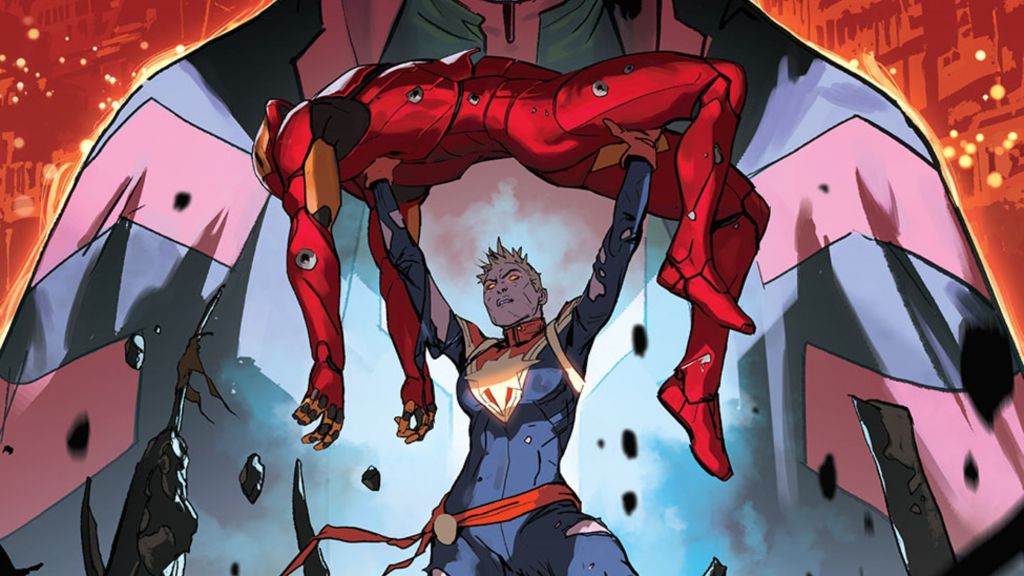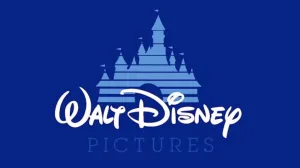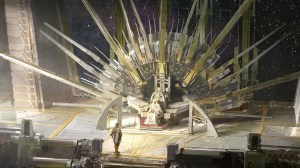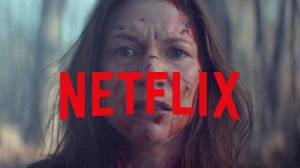Over the past several decades, Marvel Comics has created some of the most memorable events for fans, throwing us through a series of emotions. Some of these moments are amazing, redefining the superhero genre as we know it. Other moments are outright upsetting, terrifying, or heartbreaking. The beauty of a massive comic book universe is that the creative teams behind these projects can construct thousands of stories, characters, and arcs. However, some moments have a more lasting impact, such as these Marvel moments we’re still not over. Realistically, these are the types of moments that we’ll never get over, and maybe that’s okay.
Videos by ComicBook.com
Marvel Comics first hit the scene in 1939 under a different name, Timely Comics. Since then, they’ve gone through various eras, established new heroes, and added loads of new enemies for them to battle. It’s been a long run, and with any luck, it’s far from over. The extended history of Marvel comics led to many of these memorable moments (good or bad), and every year adds to it. Who knows what impactful moments are just around the corner?
Doctor Strange’s Cost of Magic in The Last Days of Magic

Let’s be real here: Jason Aaron’s whole run on Doctor Strange bounced from a mind-bending adventure to a tale with terrifying magical implications and then back again. One of the best (or worst) parts of the story began when Zelma Stanton began to learn about the price of magic (and thus, the readers got to learn alongside her). It quickly went from bizarre (Doctor Strange’s, um, specific diet) to frightening at an alarming pace. Then came The Last Days of Magic, introducing a new enemy bent on destroying magic in all forms. To say the tolls were high during this arc would be an understatement, as seemingly every magical entity (and user) in Marvel Comics was affected by what happened. It’s honestly hard to look at the magic the same way.
Doctor Strange’s The Last Days of Magic was written by Jason Aaron and illustrated by Chris Bachalo, Leonardo Romero, and Jordie Bellaire.
Doom Taking on the Mantle of Iron Man

Infamous Iron Man was a 12-issue miniseries that hit shockingly hard. That said, the core concept is fairly familiar, as it isn’t uncommon for Doctor Doom to branch out (translation: steal somebody’s role/abilities/powers). It all begins with Tony’s death. With no Iron Man to help protect the world, Doctor Doom decides to fill this void. The whole saga is about Doom’s attempt at redemption, though, as with any quest involving Doom, he’s following his own definition of the word. The whole story forces Doom, the heroes of Earth, and readers alike to view a different side of Doom and ask the question: Can a character like Doom ever be redeemed?
Infamous Iron Man was written by Brian Michael Bendis and illustrated by Alex Maleev.
[RELATED: 10 Best Iron Man Armors From Marvel Comics]
Nightcrawler’s Sacrifice

The X-Men are no strangers to catastrophe and strife, yet Nightcrawler‘s sacrifice during X-Force #26 is a moment that will always linger, regardless of how many times Kurt dies and is brought back from the dead. It all begins with the arrival of Hope – literally. Hope Summers is basically the mutant messiah, one of the first mutants born following the events of M-Day, a point in which the mutants nearly lost everything. Hope’s presence was a turning point for mutants, so naturally, many wanted her dead. Nightcrawler uses his famous abilities to get her to safety during this memorable scene, but he sustains a fatal injury in the process. Knowing Kurt, he would have done it even knowing the price. It’s the sort of hero he is. Nightcrawler’s sacrifice had several implications, including the X-Men losing access to all their teleporters. While he would later return, it didn’t diminish this moment.
Nightcrawler’s sacrifice occurred in X-Force #26, which is connected to X-Men’s Second Coming event. Creators include Craig Kyle, Christopher Yost, Matt Fraction, Zeb Wells, Mike Carey, David Finch, Terry Dodson, Ibrahim Roberson, Greg Land, Mike Choi, Lan Medina, Nathan Fox, and Esad Ribic.
The Events At Battleworld

The events of Secret Wars are unforgettable, despite the name. It was Marvel’s first massive crossover event, so it left a mark (and started a trend). As such, Secret Wars deserved an automatic spot in this list, especially for everything that happened in Battleworld. Thanks to a cosmic entity (The Beyonder), beloved heroes and villains are transported to a different world to duke it out. In other words, the presence of an all-powerful being gives a pretty solid excuse for various characters to battle to the death. Beyond kickstarting a larger trend, these battles were memorable, iconic, and fascinating. While heroes defend Earth on a daily basis, readers had previously never gotten a chance to see many heroes removed from the context of their stories, so this plot added (or removed) layers to the event.
Marvel’s Secret Wars (1984) was a massive crossover event, and many creators were involved, including Jim Shooter, Mike Zeck, and Bob Layton.
Jane Foster’s Reveal as the Mighty Thor

Jane Foster has been part of Marvel Comics for decades, most commonly seen as Thor’s ally (lover, ex, doctor, etc.). However, her story gained new heights during her run as Mighty Thor, aka The Goddess of Thunder. It all began when Thor Odinson became unworthy (an unforgettable plot all on its own), leaving Mjolnir stranded on the moon and Earth/Asgard short a hero. Jane secretly stepped up to carry the mantle at great cost to herself. As the Mighty Thor, she helped protect Midgard during the War of the Realms, while mortal Jane argued with the Congress of Worlds. Jane had many dramatic reveals during this time as her allies slowly learned the truth. One of the most significant moments was when the readers learned the truth of who was behind the mask – and how it was killing Jane to do so. Other moments include Thor learning the truth and the time Mjolnir helped Jane trick two stubborn SHIELD agents.
Jane’s time as Mighty Thor lasted seven volumes, so it’s a longer epic worth reading. It was written by Jason Aaron, and artists included Russell Dauterman, C.M. Punk, Jorge Molina, N.D. Stevenson, Rob Guillory, Marguerite Sauvage, Timothy Truman, Matt Wilson, Rafa Garres, Fraser Irving, and Seve Epting.
All of Civil War II

It goes without saying that Marvel’s Civil War events were always meant to divide – it’s the whole point! However, that doesn’t make it magically easy to get over the events of Civil War II. The story begins when an inhuman (Ulysses Cain) gains the ability to see future threats. Much like the events of the Minority Report, there’s reason to be concerned about arresting people before they commit crimes. However, some heroes threw themselves headfirst into the idea, with Captain Marvel at the helm. What follows is a clash of heroes only comparable to the first Civil War. Heroes on both sides of the lines fell, including Tony Stark, Bruce Banner, and James Rhodes. Many more were arrested, with trust broken across the board. While Civil War II did open the door to many incredible moments (Infamous Iron Man, Immortal Hulk, etc.), there’s no denying that this event was pretty controversial.
Civil War II was another major Marvel event, touching upon several solo series. Creators include Brian Michael Bendis, David Marquez, and Justin Ponsor, among many others.
Franklin Richards’ Realization During the Krakoa Era

As the son of Sue Storm and Reed Richards, Franklin Richards was always destined for great things. His powers manifested at a young age, allowing him to warp reality. Unfortunately, his powers also opened the door to heartbreak. At some point in his journey, Franklin Richards unintentionally used his abilities to make himself present as a mutant, down to the molecular level. So when Franklin inevitably used the last dredges of his ability to try to save the day, the truth came out. It was arguably one of the most heartbreaking moments in Marvel Comics. When the freshly depowered Franklin attempted to use a Krakoan gate, Xavier interrupted him and informed the young man of what he had done. Xavier wasn’t done, as he rubbed salt in the wound by telling Franklin he was not welcome on Krakoa, as he was not a mutant.
Franklin Richard’s journey had been going on for some time, but this heartbreaking moment happened in Fantastic Four #25. The issue was written by Dan Slott and illustrated by R.B. Silva and Jesus Aburtov.
[RELATED: Krakoa Could Have Been the Perfect Recipe for the MCU X-Men]
House Of M & All Related Tragedies

House of M was another Marvel event with a main (eight-issue) miniseries plus a bunch of tie-in comics. It’s an event that had a lingering impact on the mutant kind, leading to M-Day and all the following events (such as Nightcrawler’s sacrifice, mentioned above). The story is about push and pull, with characters taking and giving from one another, creating an endless cycle of loss. It all begins when Xavier cannot hold back The Scarlet Witch’s abilities (reality warping), setting characters up for a debate about killing Wanda. Quicksilver informs Magneto of the debate/decision, and things quickly go south. What follows is a whole lot of reality-warping, with the twins unleashing a desperate attempt to make everyone happy. When that fails, a battle begins. It all culminates with the infamous words: “No more mutants.” It’s easy to understand how fans may not be over that one.
House of M (2005) was created by Brian Michael Bendis, Oliver Coipel, Tim Townsend, Frank D’Armata, and many other creatives involved in the tie-in events.
Scott Summers Battling the Sentinels

Scott Summers, aka Cyclops, has had many (and we do mean many) memorable moments in Marvel Comics. Every few years, the X-Men decide to remind readers why Cyclops shouldn’t be underestimated. Enter this epic moment, in which Scott Summers was clearly just done dealing with Sentinels. As a reminder, the Sentinels have been a significant threat to the X-Men for years, both in the comics and in the animated series. More specifically, Cyclops knew that the Sentinels were about to create a whole bunch of problems for the X-Men, so he went for a more direct solution: taking off his visor to hit it with the full power of his optic blast. It also affected the surrounding area, to the surprise of no one, but it’s still quite impressive.
This amazing moment happened in Astonishing X-Men (2004) #8, written by Joss Whedon and illustrated by John Cassaday, Laura Martin, and Chris Eliopoulos.
The Return of Bucky Barnes

Bucky Barnes was the beloved sidekick to Captain America, hailing from an era when all superheroes needed a young sidekick. However, Bucky died during Avengers #4 (1964), or so we thought. Bucky’s death defied the odds in terms of the revolving door of death. He stayed gone for so long that fans started to believe it was permanent, coining the phrase “he’s Bucky dead.” In 2004, a new villain hit the comics, known as the Winter Soldier. It quickly became apparent that this villain was responsible for assassinations for years, almost as long as Bucky had been dead. The same issue that introduced the Winter Soldier, Captain America #1 (2004), had an even bigger twist at the ending. We all know what happened next, as Captain America had to face his long-dead ally coming back on the enemy’s side. The fact that it’s even more complicated than that makes it hurt more, not less. The whole series of events was groundbreaking and will likely live in fans’ memories for years.
Avengers #4 (1964) was created by Stan Lee, Jack Kirby, George Roussos, Stan Goldberg, and Artie Simek. Captain America #1 (2004) was created by Ed Brubaker, Steve Epting, Frank D’Armata, and Randy Gentille.








